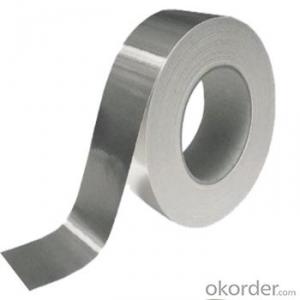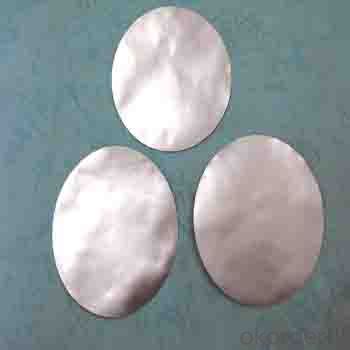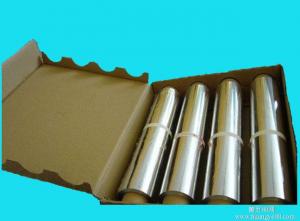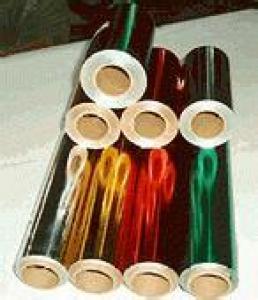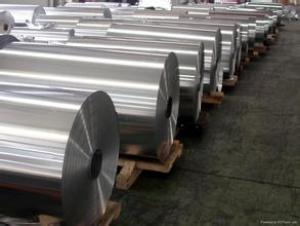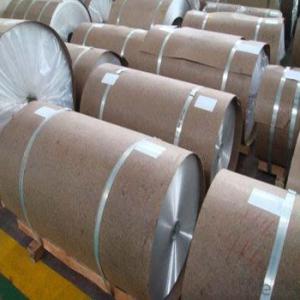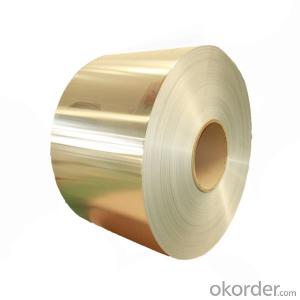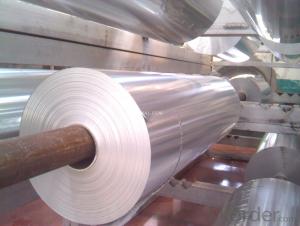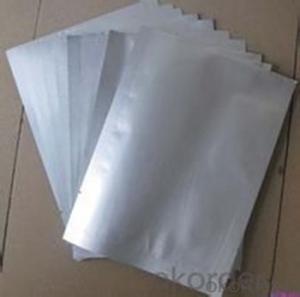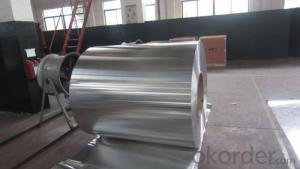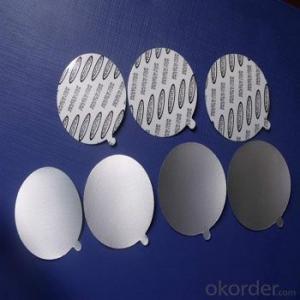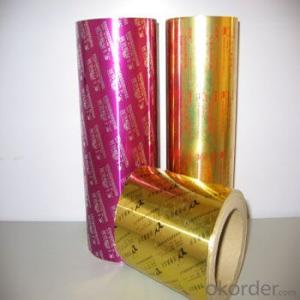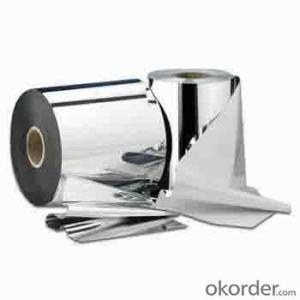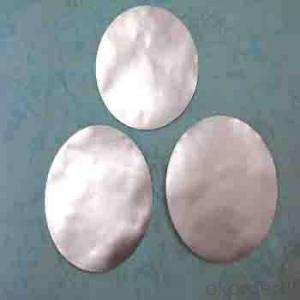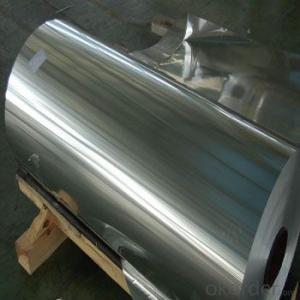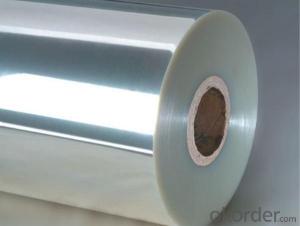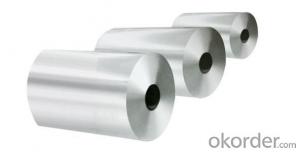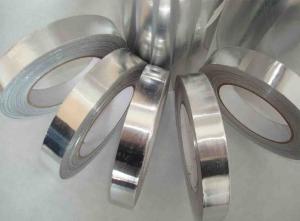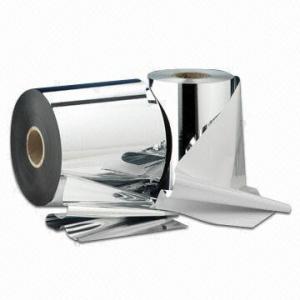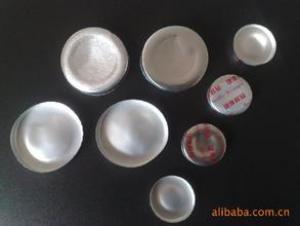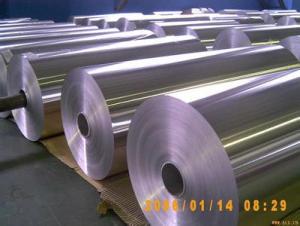Premium Aluminum Foil Lid for Yogurt and Dairy Package
- Loading Port:
- Shanghai
- Payment Terms:
- TT OR LC
- Min Order Qty:
- 3 m.t.
- Supply Capability:
- 300 m.t./month
OKorder Service Pledge
OKorder Financial Service
You Might Also Like
Specification
1. Specification
lacquered lidding foil
Application: Lid of yogurt package, dairy package
Alloy: 8006/8011/8079
Temper:O
Thickness& Tolerance: 0.03mm-0.05mm(±5%)
Width& Tolerance: 200mm-1650mm(±1mm)
Lacquer: HSL for PP/PS
Primer: Primer for printing
Standard: GB/T3198 /ASTM-B209/EN546
2. Description
In North America, aluminium foil is known as aluminum foil. It was popularized by Reynolds Metals, the leading manufacturer in North America. In the United Kingdom and United States it is, informally, widely called tin foil, for historical reasons (similar to how aluminum cans are often still called "tin cans").Metallised films are sometimes mistaken for aluminium foil, but are actually polymer films coated with a thin layer of aluminium. In Australia, aluminium foil is widely called alfoil.
3. Pictures
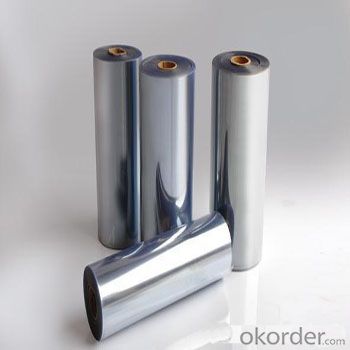
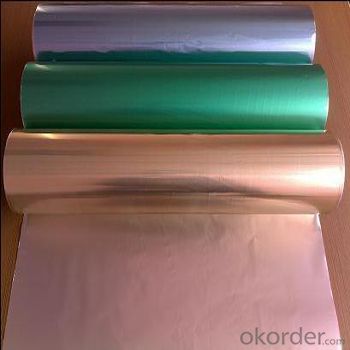
4. FAQ
1)what is aluminum?
Aluminium (or aluminum; see spelling differences) is a chemical element in the boron group with symbol Al and atomic number 13. It is a silvery white, soft, nonmagnetic, ductile metal. Aluminium is the third most abundant element (after oxygen and silicon), and the most abundant metal in the Earth's crust. It makes up about 8% by weight of the Earth's solid surface.
Aluminium metal is so chemically reactive that native specimens are rare and limited to extreme reducing environments. Instead, it is found combined in over 270 different minerals.The chief ore of aluminium is bauxite.
2)What's kind of payment term we can supply?
CIF,CFR, FOB and other.
- Q: This question asks about the various kinds of aluminum foils available in the market.
- <p>There are several types of aluminum foils, each with specific uses and characteristics. The most common types include: 1) Heavy-duty aluminum foil, which is thicker and more durable, suitable for grilling and roasting. 2) Standard aluminum foil, commonly used for everyday cooking and food storage. 3) Light-duty aluminum foil, thinner and more delicate, often used for delicate foods or crafts. 4) Non-stick aluminum foil, coated with a non-stick layer for easy release of baked goods. 5) Perforated aluminum foil, which allows for air circulation and is used for baking or grilling. 6) Reuseable aluminum foil, designed to be washed and used multiple times. Each type offers unique benefits depending on the application, from cooking to food preservation and beyond.</p>
- Q: It's a yeast bread made with dried cranberries (from what I remember), traditionally made at the winter solstice.
- The best is not always the easiestThis is a great recipe! 2 tablespoons cornstarch 1/4 cup cold water 1 1/2 cups sugar 1 tablespoon lemon juice 4 cups blackberries, picked over, rinsed drained 1 cup flour 1 teaspoon baking powder 1/2 teaspoon salt 6 tablespoons butter, cold, cut in small pieces 1/4 cup boiling water In a large bowl, stir together the cornstarch and 1/4 cup cold water until cornstarch is completely dissolvedAdd 1 cup sugar, lemon juice, and blackberries; combine gentlyTransfer to a cast iron skillet, about 8-inchIn a bowl, combine the flour, remaining sugar, baking powder, and saltBlend in the butter until the mixture resembles coarse mealAdd 1/4 cup boiling water and stir the mixture just until it a soft dough is formedBring the blackberry mixture to a boil, stirringDrop spoonfuls of the dough carefully onto the boiling mixture, and bake the cobbler on a baking sheet (line with foil to avoid a mess) in the middle of a preheated 400° oven for 20 to 25 minutes or until the topping is goldenServe warm with vanilla ice cream or whipped cream.
- Q: Electrolysis of water seems like a massive waste of energyI can buy 50lb bags of Sodium Hydroxide for 35 dollars and an unlimited supply of aluminum cans and foilIs it more efficient to do this than using electrolysis, reforming, or gasification.
- There is a vast amount of hydrogen consumed daily in the ammonia synthesis process and the synthetic fuel industry Very clever chemical engineers have decided that the most economical way to get this hydrogen is by electrolysis, reforming, or gasificationDo you wonder why they have stuck with this route A few ideas come to my mind : Caustic soda: This has to come from the electrolysis of NaClA by-product is chlorine gasThe production of NaOH and Cl2 gas has to be kept in balance If you have a new high demand for NaOH - what do you do with the extra Cl2 gas producedMy understanding of this industry ( talking to some friends involved in this ) is that there is a ready market for NaOH but not for Cl2 - due to health and safety problemsFor instance the pulp and paper industry which had a large requirement for Cl2 now uses little if any It would be difficult to introduce a new market for NaOHThe end product of the aluminium / NaOH reaction is sodium aluminate What are you going to do with this ? Aluminium cans and foil : It is very simple to collect a few empty aluminium cans or foil for a home experiment - but you can hardly expect to run the hydrogen gas industry on the collection of scrap aluminium - This is without considering what the established industry that recycles scrap aluminium cans back into new cans will do if their raw material source is removed Do you know enough about the costing of producing hydrogen via reforming, or gasification to be certain that your Al/NaOH process is cheaper? Just a few thought - there are many others I am sure.
- Q: An element has 3 valence electrons in 3rd shellName the element and give its atomic number.?
- Aluminum has 3 electrons in its 3rd shell and atomic number 13 Hope this Helps! :D
- Q: So I have a pre-cooked turkeyI tried to reheat it in the oven for like 2 hours but I keep trying the thermometer thingy and it's cold inside! The directions said something about a foil tent but I just covered the thing with aluminum foilis that ok? Anyway, I was wondering why it's coldish on the inside and how I can fix it :(
- It's really difficult to re-heat a turkey that's wholeYou might wind up with a really dry turkeyI'd slice it up first, put the slices in a pan with a teeny bit of water, cover the pan with aluminum foil, then heat itIt'll heat more evenly that wayStart with about 20 min at 350, then add time as you feel it's needed.
- Q: Are these clothes okay for cosplaying Lucius Malfoy?
- Tea KettleIt uses uranium to heat water at high pressure and send that water to a different heat exchanger, called a Steam Generator, to boil water into steamThis steam is then used to turn turbine generators, which generate electricity for the electrical distribution grid.
- Q: Ok so I found some good recipes to make the paste with and I've got some good ideas about what all I'm going to make, but that brings me to some other questions -1Say I wanted to make a skull and crossbonesWhat would be the best base to use for the skull head and what would be best to use for the crossbones?2Say I wanted to make a starWhat would be best to go about doing that?3Say I wanted to make sort of like a collage for bands I likeWould it be best to choose just one band, or several bands combined? What would be a good idea to use for a base? What all should I do to it exactly to make it a cool, good collage?4Say I wanted to make a band's logoWhat would be a good base? What else would I need?Thanks for all and any help/suggestions.
- For skull base, I'd try a balloon for the basic shapeFor crossbones, how about using toilet paper cardboard centers or paper towel centersFor a star, would cutting out a cardboard one be a good base? Collages to me are like posters with lots pictures pasted on itSo get some poster tag board at a craft store or even at TargetAs for base of the band's logo, one would have to know what the logo was in order to suggest a baseGood luck.
- Q: How to level the aluminum foil with the thickness less than 0.1? Dose the stretch bender useful?
- The technological parameter of stretch bending has casting gap. your problem should be solved from the casting gap and extention control(especial the exit test) .when having the stretch bending design,the thickness of material should have the relation to the diameter of working roll and the thickness should be thinner 0mm.05mm--1.the diameter of working roll of our plant is 16mm.
Send your message to us
Premium Aluminum Foil Lid for Yogurt and Dairy Package
- Loading Port:
- Shanghai
- Payment Terms:
- TT OR LC
- Min Order Qty:
- 3 m.t.
- Supply Capability:
- 300 m.t./month
OKorder Service Pledge
OKorder Financial Service
Similar products
Hot products
Hot Searches
Related keywords
